Top 10 Most Aggressive Dog Breeds That Everyone Should Know Of


While any dog can be aggressive due to poor breeding or training, some breeds have a genetic tendency towards territoriality and dominance. You’ll want to be extra cautious if any of the dogs on this list catch your eye. These pups may look cuddly, but they pack a mean bite if not properly socialized and handled from an early age.
If you’re not an experienced dog owner, you may want to consider a breed with a friendlier reputation. But if you’re determined to take on the challenge of training one of these feisty breeds, be prepared to take the alpha role and lay down the law to keep your aggressive hound under control.
What Makes a Dog Aggressive? Key Factors That Contribute to Aggression
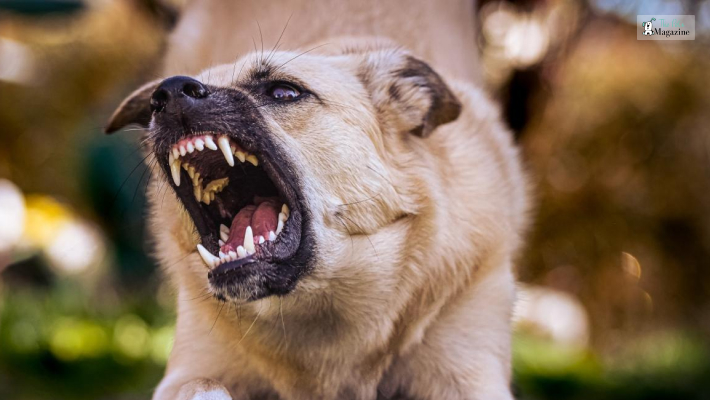
Aggression in dogs often comes down to a combination of factors. Genetics and individual temperament play a role, as some breeds have been specifically bred as guard dogs, hunting dogs or for sport fighting. However, factors like home environment, upbringing, training and socialization are also hugely significant. Some of the key factors that contribute to aggression in dogs are:
Lack of socialization
Puppies need positive experiences with people and other dogs in their first few months to learn good behavior. Without this exposure, they can become fearful or reactive in their later life whenever they are around too many people or other dogs.
Abuse or neglect
Dogs that have been mistreated may become aggressive as a defense mechanism. They need patience, consistency, and lots of TLC to overcome past trauma.
Health issues
Sometimes aggression arises from an underlying medical condition such as hypothyroidism, ear infection, and chronic pain due to hip dysplasia and arthritis. It’s a good idea to rule out issues like arthritis, dementia, or any physical causes with a vet checkup if you bring home an elderly dog with a history of aggresion.
Territoriality
Some dogs are naturally inclined to guard their home or yard such as rottweilers, Belgian Malinois, German Shepherd, Cane Corsos and so on. With consistent training from an young age and by teaching them to be less territorial, you can curb the aggressiveness.
While certain breeds may be predisposed to aggression, there is no such thing as a “born bad” dog. With the right kind of care, training, and attention, even dogs with aggressive tendencies can become well-adjusted and trustworthy companions.
The most important thing is to understand what factors motivate your dog’s behavior so you can address the root cause, not just the symptoms. With time and patience, an aggressive dog can be rehabilitated.
List Of Top 10 Most Aggressive Dog Breeds
When it comes to aggressive dogs, there are certain breeds you’ll want to be cautious around. Here are the top 10 most aggressive dog breeds:
Pit Bull Terrier:
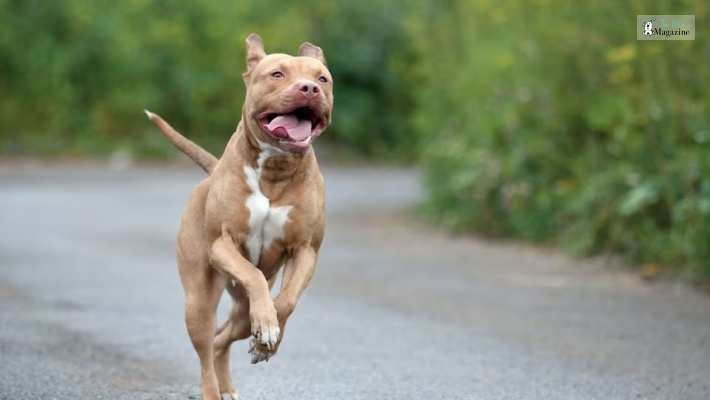
The term “Pit Bull” is often used to refer to several breeds, including the American Pit Bull Terrier, American Staffordshire Terrier, and Staffordshire Bull Terrier. Pit Bull Terriers are often considered aggressive due to a combination of historical, genetic, and environmental factors.They have a strong prey drive and were historically bred for dog fighting, which has contributed to their reputation for aggression. These dogs were also selected for traits that could include aggression towards other dogs.
Media coverage has also played a role in shaping the public’s perception of Pit Bulls, often highlighting negative incidents involving the breed, which can lead to a skewed view of their behavior. Responsible ownership, including proper training and socialization, is crucial in preventing aggressive tendencies in any dog, including Pit Bulls.
Rottweiler:

Rottweilers are large and powerful dogs that can be protective and territorial. They have a strong guarding instinct and require proper training and socialization from an early age.
German Shepherd:

German Shepherds are intelligent and versatile working dogs. While they are often used as police and military dogs, improper training and socialization can lead to aggression. Responsible ownership and training are crucial for this breed.
Doberman Pinscher:
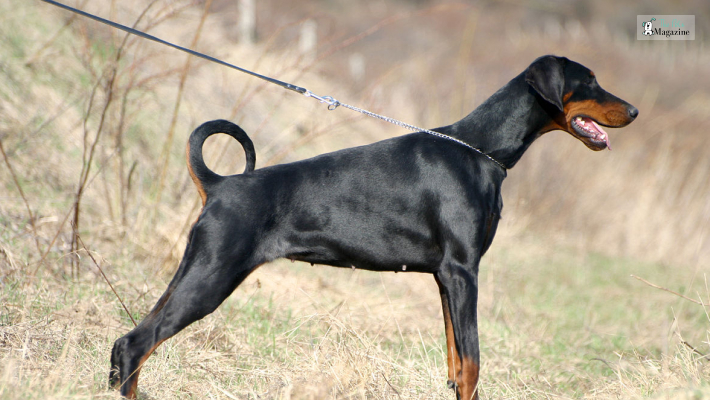
Doberman Pinschers have a reputation that often precedes them as aggressive dogs, largely due to their history as guard and police dogs. However, this breed is not inherently aggressive. Like any dog, their behavior is influenced by various factors such as genetics, socialization, and training. Hence, it’s crucial to dispel the myth that all Doberman Pinschers are aggressive by nature
These dogs are highly intelligent and energetic dogs. They are known for their loyalty and protectiveness, which makes them excellent companions. But Dobermans also have a strong protective instinct, which can sometimes be perceived as aggression, especially if they are not properly trained or socialized. Early and extensive socialization is mandatory to avoid either shyness or aggression.
See Also: American Vs. European Doberman: Breed facts & Information
Akita:

Akitas are large and powerful dogs originally from Japan. They were originally bred for guarding and hunting in Feudal Japan, so they have a strong instinct to protect. This trait makes them excellent watchdogs but can pose challenges for socialization with other dogs and strangers.
They have a strong guarding instinct and can be aloof with strangers. Akitas can exhibit aggressive behaviour, particularly if they feel provoked or their territory is threatened. They are known for being fearless and protective of their owners, which can sometimes translate into aggression. However, with the right owner, Akitas can be affectionate, composed, and receptive dog. Early socialization and consistent training are essential for this breed.
Chow Chow:

Chow Chows are independent and strong-willed dogs. They can be protective of their families and have a tendency to be aloof with strangers. Aggression in Chow Chows can stem from their natural breed characteristics, pain or discomfort, dominance, or an inappropriate lifestyle.
It’s also important to note that male Chow Chows may exhibit more aggression due to factors like hormones and natural dominance1. Properly trained and socialised Chow Chows can be well-behaved and form strong bonds with their families.
Which is why,early socialisation and positive reinforcement training methods are important for this breed.
Great Dane:
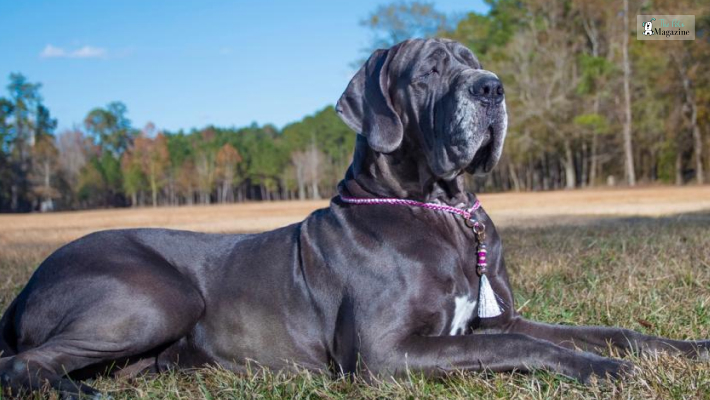
Great Danes are gentle giants, but they can exhibit aggression if not properly trained and socialized. Early socialization and positive reinforcement training are crucial for managing their size and strength.
Boxer:
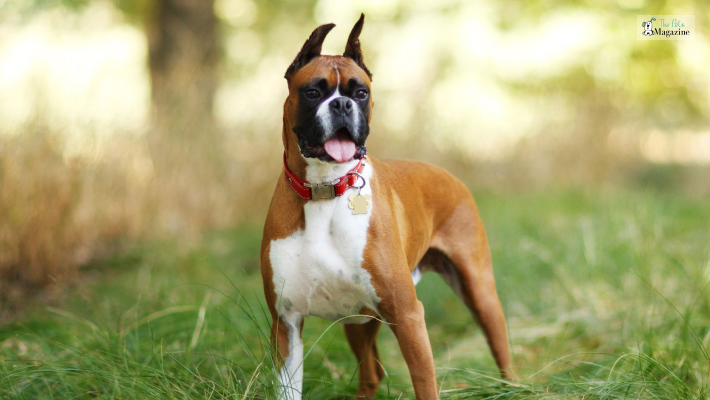
Boxers are energetic and playful dogs. While they are generally friendly and good with families, they can be protective and may display aggression towards other dogs or strangers if not properly trained and socialized.
Dalmatian:

Dalmatians are known for their unique spots and energetic nature. They can be prone to certain behavioral issues, including aggression, if not given proper training and socialization.
Siberian Husky:

Huskies are known for their striking appearance and high energy levels. They have a strong prey drive and may exhibit aggression towards smaller animals. They also require consistent training and exercise to prevent behavioral issues.
Remember, various factors can influence aggression in dogs. It is quite a complex issue. Hence, it is essential to consult with a professional dog trainer or behaviorist if you have concerns about aggression in any breed of dog.
What Are The Signs of Aggression in Dogs
Recognizing signs of aggression in dogs is important for preventing potential incidents. Here are some common signs:
- Stiff Body Posture: A dog may stand rigidly, indicating discomfort or a readiness to react.
- Ears Pinned Back or Erect: This can signal fear or aggression.
- Growling: A low, guttural sound can be a warning to stay away.
- Baring Teeth: Exposing teeth is a clear sign of aggression.
- Snarling: A combination of growling and showing teeth.
- Bites: These can range from light nipping to more intense bites that could cause injury.
- Tail Position: A stiff, straight tail or one held high can indicate aggression, while short, sharp wags may also be a warning.
Tips for Responsibly Owning and Caring for Aggressive Dog Breeds
Owning and caring for any dog, especially those with a tendency towards aggression requires responsible ownership and commitment. Here are some tips for responsibly owning and caring for aggressive dog breeds:
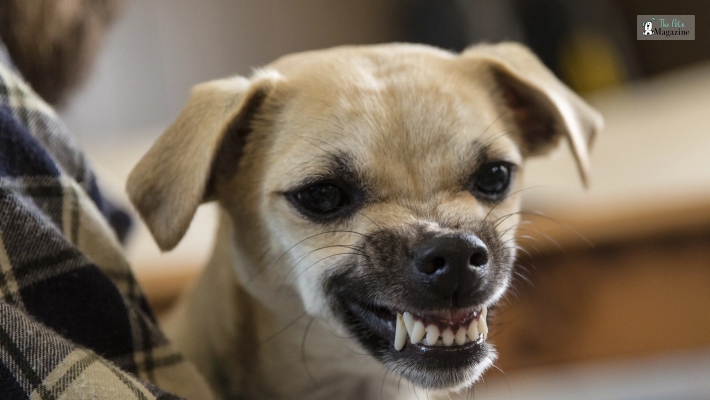
Identify Warning Signs
Learn to recognize early signs of aggression, such as yawning, blinking, or nose licking, which can indicate stress or anxiety.
Identify the Cause
Understanding why your dog is aggressive is crucial. Common causes include fear, anxiety, possessiveness, or lack of socialization. Addressing the root cause will help prevent future aggression.
Start Training Them Immediately
When you bring an aggressive breed home, it’s critical to start training right away. Early socialization and obedience training can help curb aggressive tendencies and ensure your dog becomes a well-behaved family member.
Early Socialization
Start socializing with your dog from a young age. Introduce them to a variety of people, animals, and environments in a positive and controlled manner. This helps them develop appropriate social skills and reduces the likelihood of fear or aggression in unknown situations.
Always Use Positive Reinforcement While Training.
Focus on basic commands like “sit,” “stay,” and “leave it.” Use positive reinforcement techniques, not punishments to reward good behavior and discourage unwanted behaviors. Reward-based training methods build trust, strengthen the bond with your dog, and promote a positive learning environment. So make sure to give lots of treats, praise, and belly rubs when your dog responds well.
Consistent Training
Enroll your dog in obedience training classes or work with a professional dog trainer who has experience with aggressive breeds. Positive reinforcement methods are effective in shaping desired behaviors and building a strong bond with your dog.
Proper Exercise and Mental Stimulation
Provide your dog with regular exercise and mental stimulation to prevent boredom and frustration, which can contribute to aggression. Engage in activities such as walking, running, playing fetch, or puzzle toys that challenge their minds.
Secure Fencing and Leash Handling
Ensure that your property has secure fencing to prevent your dog from running away and potentially causing harm to others or themselves. When walking your dog, use a sturdy leash and be in control of their movements to avoid potential conflicts with other animals or people.
Responsible Management
Be aware of your dog’s triggers and take steps to manage their environment accordingly. For example, if your dog becomes reactive around other dogs, avoid situations where they might encounter unfamiliar dogs without proper supervision.
Spay/Neuter
Consider spaying or neutering your dog. This can help reduce aggressive behaviors associated with hormonal changes and can contribute to overall better behavior and temperament.
Positive Reinforcement
Use positive reinforcement techniques to reward good behavior and discourage unwanted behaviors. Reward-based training methods build trust, strengthen the bond with your dog, and promote a positive learning environment.
Supervision And Safety Measures
Always supervise your dog when they are interacting with children, strangers, or other animals. Use caution and take necessary safety measures to avoid any potential incidents.
Create A Safe Environment
Ensure your dog has a safe space where it can retreat to when feeling overwhelmed or threatened.
Research on the breed and Consult a Professional If Necessary
You should also read books, watch youtube videos, and consult with professionals to educate yourself about dog behavior, aggression, and responsible ownership. Understanding your dog’s needs and body language will help you address any potential issues as soon as possible.
If you are having trouble curbing your dog’s aggression or if you have concerns about their behavior, consult a professional dog behaviorist or trainer. They can provide professional advice and training techniques tailored to your dog’s specific needs.
Remember, responsible ownership and care are for any dog breed, and it’s important to address any behavioral concerns quickly and professionally. With time, patience, and consistency, even naturally aggressive breeds can become beloved family pets. But they require training and monitoring to keep their behavior in check. So what do you think? Are you ready to commit the time and effort to properly raise an aggressive breed?








Leave A Comment